Challenging Law’s ‘Monopoly on Violence’: Human Rights and Disability-Specific Lawful Violence
Dr Linda Steele, Lecturer, School of Law University of Wollongong, Australia
29 March 2016
The Convention on the Rights of Persons with Disabilities[i] (‘the CRPD’) provides a human rights basis for seeing non-consensual medical treatment, detention and chemical and physical restraint as forms of discriminatory violence against people with disability. United Nations human rights bodies must be consistent and persistent in urging states parties to reform criminal and civil laws to explicitly prohibit these practices and provide legal avenues for redress. Until this occurs, these practices will continue to be lawful forms of violence which are condoned and, indeed, made possible by the state and by law.
In my blog post I will briefly discuss the concept of ‘lawful violence’ and why non-consensual medical treatment, detention and physical and chemical restraint constitute ‘disability-specific lawful violence’. I will then explain how the CRPD provides a human rights basis to contest the lawfulness of this violence, and what needs to be done to urge states parties to follow the CRPD and ultimately prohibit and remedy disability-specific lawful violence.
Questioning Violence’s Legal Status
People with disability experience disproportionately high rates of violence when compared to people without disability[ii] (even taking into account the issues with data collection which result in an under-quantification of the rates of violence against people with disability[iii]). There are numerous approaches to categorizing violence against people with disability for the purposes of analysis and devising recommendations for law reform directed to reducing its incidence and enhancing justice for survivors. One approach which I adopt in this blog post is to categories violence in terms of its legal status under domestic law: whether violence is prohibited and legally actionable, or instead permitted and condoned by law. This approach is particularly fruitful for appreciating the significance of the interface of the CRPD and domestic law to states parties addressing all forms of violence against people with disability.
Some unwanted contact, detention and restraint against people with disability constitutes ‘unlawful violence’ – violence that is prohibited by domestic criminal laws (e.g. offences of assault or sexual assault) and/or constitutes a tortious wrong pursuant to civil law (e.g. torts of battery or false imprisonment). While people with disability experiencing ‘unlawful violence’ technically have available to them criminal and civil legal protection and remedies, at an individual level there are considerable issues with enforcing these laws vis-à-vis survivors with disability. These issues are due to such factors as discriminatory views about disability (and the intersection of disability with gender, sexuality, race, criminality and age) held by police, prosecutors and judges, and because of discriminatory evidential and procedural laws.
Despite the significant issues with ‘unlawful violence’ vis-à-vis people with disability, there are some forms of unwanted contact, detention and restraint of people with disability which do not even fit within this category of ‘unlawful violence’ such that there is not even the possibility of punishment and remedy. For present purposes, non-consensual medical treatment, detention and restraint of people with disability do not fall within the category of ‘unlawful violence’, as I will now turn to explain.
Some unwanted contact, detention and restraint of people with disability – notably non-consensual medical treatment, detention and physical and chemical restraint – is not prohibited or actionable under domestic law and instead is legally permissible. As such, these practices fall outside of the category of ‘unlawful violence’ and sit in a different category of ‘lawful violence’ or, as I term it by reason of the significance of ‘disability’ to its lawfulness, a category of ‘disability-specific lawful violence’.[iv]
Disability-Specific Lawful Violence
Drawing on the work of Robert Cover[v] on ‘legal violence’ (i.e. violence permitted by law), Austin Sarat and Thomas Kearns[vi] argue that law has a ‘monopoly’ on violence, because law determines what is possible to do to another’s body without any legal accountability. Domestic law, and particularly criminal law and tort law, has singular control over violence because regardless of individual experiences of or social values towards unwanted contact detention and restraint (or, indeed, even international human rights perspectives on unwanted contact, detention and restraint) it is the domestic legal system that determines what will be punished or remedied and conversely what will be permitted and go without any punishment of the perpetrator or remedy for the survivor. Unwanted contact, detention and restraint becomes violence that is ‘lawful’ where it is permitted by law. This is not to suggest that legal permissibility means that lawful violence is completely at large. Generally, lawful violence is deeply embedded in legislative and common law frameworks and in judicial and administrative procedures (many of which purportedly ‘protect’ those subjected to lawful violence through ‘procedural’ oversight). Therefore, the state and law are significantly complicit in the operation of and legitimation of unwanted contact, detention and restraint where this is permitted by law.
Turning then to non-consensual medical treatment, detention and physical and chemical restraint of people with disability, these practices are lawful violence in the sense discussed above because they are not prohibited by or actionable under law. In very general terms, criminal law defines assault and civil law defines battery in terms of non-consensual interpersonal physical contact or the non-consensual threat of such contact. The tort of false imprisonment and related criminal offences consider detention and restraint unlawful where it is the non-consensual deprivation of liberty in a delimited space. In the face of the general criminal and tortious prohibition of these acts, the entry point for the legality of such acts vis-à-vis people with disability is the legal exceptions to unlawful violence created by certain defences to criminal responsibility and tortious liability: consent, necessity and lawful authority. These are discussed here in very general terms (noting there will be differences between jurisdictions):
- Consent: Interpersonal physical contact does not constitute assault if consented to by the individual. However, where the individual does not have capacity to consent, the law permits a third party to consent on that person’s behalf. In the context of medical treatment of people with disability (such as sterilization) there are established legal processes for recognizing third party consent, e.g., involving determining lack of legal capacity on the basis of mental incapacity and then determining whether the medical decision is in the individual’s ‘best interests’ or a ‘step of last resort’.[vii]
- Necessity: Non-consensual medical treatment, detention and physical and chemical restraint of people with disability might also be considered to fall in the defence of medical necessity if the procedure is considered ‘necessary’ in order to protect the individual’s life, health or wellbeing and the act is reasonable and proportionate to the ‘harm’ to be addressed (regardless of whether this harm is in the context of an immediate and short term emergency or an ongoing state of affairs).[viii]
- Lawful authority: Non-consensual medical treatment, detention and physical and chemical restraint of people with disability are lawful when done pursuant to statutory or judicial authority.[ix] Such authority includes civil and forensic mental health legislation authoring detention and treatment, as well as legislation authorizing chemical and physical restraint.
These defences carve out an exception to ‘unlawful violence’ for non-consensual medical treatment, detention and physical and chemical restraint of people with disability, such that they become forms of ‘lawful violence’ regulated by law. This procedural protection on an individual basis of when and how such interventions take place elides questioning at a systemic level why these unwanted practices should ever be permitted and in turn elides categorically naming these practices as violence.
Yet, the ‘regulation’ by law of these practices is typically framed as ‘protective’ because law’s involvement provides administrative and judicial procedural oversight to when and how these non-consensual interventions occur. In fact, the greater ‘procedural justice’ afforded to people with disability in the past couple of decades is frequently characterized as a marker of a more enlightened and progressive approach by law and society to people with disability insofar as it is juxtaposed to earlier purportedly extra-legal, arbitrary and repressive practices towards people with disability. However, far from showing law’s role in the ‘salvation’ or ‘empowerment’ of people with disability, the legal processes through which non-consensual medical treatment, detention and physical and chemical restraint of people with disability are permitted in fact signal law’s complicity in this violence: the state’s regulation of a legal economy of violence against people with disability. The state and law contributes to the production of broader social and ethical norms about what is permissible to be done to people with disability and ultimately lowers the value of the bodies and lives of people with disability.
The status of some violence against people with disability as lawful has implications for the punishment of perpetrators and remedies for survivors – in short, there are none. For example, if an individual is detained in a mental health facility and given treatment pursuant to a court order made under civil mental health legislation, that individual cannot report this to police and have the doctor charged with assault (although if the doctor acts outside of the specifics of the order, this would then be unlawful). Similarly, if a girl with intellectual disability is sterilized pursuant to her parent’s consent, she cannot claim civil damages for battery where the doctor acted pursuant to her parents’ decision which was authorized by the court as being in her best interests. A further example is the detention in forensic mental health system of a non-convicted individual on basis of unfitness: this is lawful if is unfitness determined pursuant to the legal process specified by forensic mental health legislation and an individual cannot claim damages for years of imprisonment.
Above I have explained how non-consensual medical treatment, detention and physical and chemical restraint of people with disability become ‘lawful violence’. I refer to this as ‘disability-specific’ lawful violence because disability is central to the lawfulness of this violence specifically to (and sometimes exclusively to) people with disability:
- This violence occurs in institutional circumstances specific to the marginalization, segregation and regulation of people with disability, e.g., mental health facilities, forensic mental health system, sterilization.
- Circulating across all of the defences discussed above and the associated legal frameworks of substituted decision-making (in the context of the defence of consent) and authorizing legislation (in the context of the defence of lawful authority), are stereotypes about disability as exemplified by judicial interpretation of such value-laden legal concepts as ‘harm’, ‘necessity’, ‘reasonable’, ‘best interests’ in relation to people with disability.[x]
- These defences and the associated legal frameworks of substituted decision-making and authorizing legislation appear as socially and ethically acceptable because of ideas associated with people with disability as needing (and benefiting from) medical treatment, detention and restraint. Significant here are discourses of disability linked to medicine and defect (rationales of therapy), helplessness (rationales of care and protection) and danger (rationales of risk management).
- Running across all of the defences and the associated legal frameworks of substituted decision-making and authorizing legislation is the significance of ‘mental incapacity’: either as the basis for the removal of legal capacity (e.g. in defences of consent and necessity) and/or as a basis for indicating lack of self-control, danger or vulnerability (e.g. in defences of necessity and lawful authority). ‘Mental incapacity’, while typically thought of as a scientifically objective characteristic of individuals, is a problematic concept embodying norms of rationality, self-sufficiency and bodily impermeability that are premised on an able subject.[xi]
Therefore, categorizing violence against people with disability in terms of its legal status illuminates how some violence against people with disability is legally permitted and state sanctioned. Where law has a monopoly over ‘violence’ against people with disability, it is arguable that turning to law to address individual instances of this violence is futile. A criminal or civil action can never be successful even with the best lawyers and judges: we cannot turn to domestic law for punishment or remedy (nor can we turn to the state to condone this violence) because law says they are not ‘violence’ in the legal sense and as such are not wrongs or harms and do not constitute injustices.
CRPD and Disability-Specific Lawful Violence
The CRPD provides the possibility of seeing non-consensual medical treatment, detention and physical and chemical restraint of people with disability as violence, and provides a human rights basis for states parties to prohibit these practices as unlawful violence. The CRPD explicitly imposes obligations on states parties to protect people with disability from violence, including by taking legal measures (presumably to prohibit violence and provide appropriate remedies). Article 16 of the CRPD states in part that: ‘States Parties shall take all appropriate legislative, administrative, social, educational and other measures to protect persons with disabilities, both within and outside the home, from all forms of exploitation, violence and abuse, including their gender-based aspects.’
Yet, the obligation in Article 16 is not merely to protect individuals from currently unlawful violence, e.g., enhancing enforcement in relation to individual cases. Rather, when Article 16 is read in conjunction with other Articles of the CRPD, it becomes apparent that states parties’ obligations under the CRPD in relation to violence include protecting people with disability from forms of violence which are presently lawful and hence from ‘disability-specific lawful violence’:
- The right to equality and non-discrimination in Article 5 and the right to personal integrity in Article 17 of the CRPD mean that individuals must have recognized their self-determination and ability to make their own decisions to consent to or withhold consent to interventions in their bodies and in their lives to the same degree as people without disability. People with disability cannot be subjected to non-consensual physical contact, detention or restraint on the basis of their disability.
- The right to equality and non-discrimination in Article 5 in conjunction with the right to legal capacity in Article 12 of the CRPD means that individuals should have their legal capacity to make decisions recognized to the same extent as individuals without disability and should not be denied legal capacity on the basis of ‘mental incapacity’. The right to exercise autonomy in consenting or withholding consent should be available to all regardless of perceived ‘mental incapacity’. In turn, non-consensual physical contact, detention or restraint on the basis of a denial of legal capacity is discriminatory because it applies only to individuals with a disability-linked ‘mental incapacity’ (itself a discriminatory concept, as mentioned above).[xii] On a similar basis, non-consensual detention on the basis of disability constitutes arbitrary detention pursuant to Article 14.[xiii]
- The right to freedom from torture in Article 15 means that the purportedly protective judicial and administrative procedural frameworks surrounding non-consensual contact, detention or restraint could, perversely, render these interventions not merely violence but state-sanctioned discriminatory violence and hence torture.[xiv]
- The shift evident in the preamble to the CRPD in the meaning of disability from a medical model to disability as ‘an evolving concept and that disability results from the interaction between persons with impairments and attitudinal and environmental barriers that hinders their full and effective participation in society on an equal basis with others’ illuminates the significance of the social and political contingency of the meaning of disability to the realization of the human rights of people with disability including through domestic legal frameworks. In turn, this shift suggests that stereotypes about disability might presently circulate in legal frameworks that render lawful non-consensual contact, detention or restraint of people with disability.
The CRPD is quite radical in the new approach to violence against people with disability that it provides. This is because this approach contests foundational concepts of consent, capacity, state/judicial authority which order domestic legal systems (and to a certain extent international human rights law). This approach also contests old (but ever growing) institutions, disciplines and industries of incarceration and therapy through which non-consensual physical contact, detention or restraint are administered.
What needs to be done?
Despite these rather revolutionary ideas about disability and violence provided by the CRPD, disability-specific lawful violence continues. While the CRPD has prompted some states parties to ‘review’ (though perhaps not necessarily ‘reform’) capacity laws and mental health laws, ten years on from the coming into force the CRPD has not witnessed the prohibition of non-consensual physical contact, detention or restraint of people with disability.
Here I conclude by making a number of suggestions related to the significance of the interface of CRPD and domestic law to the prohibition and remedying of (presently lawful) violence against people with disability.
United Nations human rights committees must be consistent and persistent in urging states parties to reform criminal and civil laws to explicitly prohibit non-consensual physical contact, detention or restraint of people with disability including prohibit forced medical treatment, detention and chemical and physical restraint. United Nations human rights bodies should continue to encourage states parties to remove or withdraw interpretive declarations which interpret human rights to enable non-consensual medical treatment, detention and restraint (even when only as a ‘last resort’ or when in ‘best interests’). Unfortunately, these strategies might be impeded by the discrepancies which exist between United Nations human rights bodies in relation to the approach to disability and violence, with some human rights bodies failing to acknowledge disability-specific lawful violence and focusing on the ‘procedural’ protection approach to (regulating) violence. The discrepancies between United Nations human rights bodies might enable states parties to pick and choose how to interpret their obligations related to violence in such a way that ultimately focuses on addressing currently ‘unlawful’ violence and ignoring eliminating disability-specific lawful violence. United Nations human rights bodies might need to turn to consider the ideas of disability underpinning their approaches to violence against people with disability, some of which might precede the CRPD and its shift from a medical approach to disability.
A number of additional strategies which states parties should pursue (and which United Nations human rights bodies should encourage states parties to pursue) include:
- States parties should not limit their ‘review’ and ‘reform’ efforts to attaining a best practice in judicial and administrative oversight of disability-specific lawful violence (i.e. through procedural safeguards) to questioning whether some practices should ever be state sanctioned on anyone (including people with disability) regardless of the legal procedure through which this sanctioning occurs. Central to this is making apparent and naming the ideas about disability inherent in the law itself, rather than only addressing stereotypes about law that circulate in the application or enforcement of law at an individual level. This involves denaturalizing centuries-old legal concepts, legal procedures and jurisdictions – some of which are foundational to legal authority generally.
- States parties should consider the intersection of ideas about disability with other dimensions of identity, particularly being mindful of the identities of the individuals to whom these practices disproportionately apply: e.g. gender and forced mental health treatment and detention of women, age and chemical and physical restraint of older people with dementia in aged care facilities, Indigeneity and over-representation of Indigenous Australians in forensic mental health detention, gender and sterilization, ideas about criminality re people in forensic mental health detention.
- States parties should revisit the ideas of bodies and space envisaged by domestic laws related to violence, notably in relation to false imprisonment. In domestic law, detention and restraint focuses on external factors which restrict the individual’s movement – yet much of the interventions in the disability-specific context work from within the body – to restrain and regulate from within (e.g. chemical restraint[xv]).
- States parties should develop a strategy for ‘transitional justice’[xvi] that addresses prohibiting and making legally actionable future instances of non-consensual medical treatment, detention and restraint as well as developing a system to recognize, remedy and remember past instances of these practices when they were still lawful.[xvii] This might involve thinking beyond disability to how law (both international and domestic legal frameworks) have dealt with mass atrocities, historical injustices and state-sanctioned violence in relation to other marginalized groups. This system must not only focus on the individuals and institutions administering these practices, but also address how to make the state and law account for their complicity.
- States parties should address the role of ‘para-legal’ regulatory frameworks such as bioethics (e.g. research, clinical, professional) in legitimizing the administration of disability-specific lawful violence.[xviii]
- States parties should work with health, medical and disability services to challenge institutional, disciplinary and (importantly in an increasingly privatized and corporatized context) economic imperatives[xix] for the continuation of the administration of disability-specific lawful violence.
- States parties should encourage reforms to tertiary legal education which take a critical approach to disability and to disability-specific lawful violence in courses such as criminal law and tort law. Typically, law text books cover the operation of defences in relation to people with disability in a self-evident and non-critical manner which then naturalizes the legal treatment of people with disability and negates their subjection to violence and the law and state’s complicity in this violence.
Ultimately, the lower legal threshold of violence in relation to people with disability reflects a devaluing of bodies and lives of individuals with disability – until this is addressed the human rights of people with disability promised by the CRPD will be profoundly and disappointingly incomplete.
[i] Convention on the Rights of Persons with Disabilities, opened for signature 13 December 2006, 2515 UNTS 3 (entered into force 3 May 2008).
[ii] See, e.g., Karen Hughes, Mark A Bellis, Lisa Jones, Sara Wood, Geoff Bates, Lindsay Eckley, Ellie McCoy, Christopher Mikton, Tom Shakespeare and Alana Officer, ‘Prevalence and Risk of Violence against Adults with Disabilities: A Systematic Review and Meta-Analysis of Observational Studies’ (2012) 379(9826) Lancet 1621.
[iii] See, e.g., Jess Cadwallader, Anne Kavanagh and Sally Robinson, ‘We Count What Matters, and Violence Against People with Disability Matters’, The Conversation, 27 November 2015, http://theconversation.com/we-count-what-matters-and-violence-against-people-with-disability-matters-51320, accessed 6 January 2016.
[iv] On ‘disability-specific lawful violence’ generally see, e.g., Linda Steele, ‘Disability, Abnormality and Criminal Law: Sterilisation as Lawful and Good Violence’ (2014) 23(3) Griffith Law Review 467; Submission to the Senate Community Affairs References Committee, Inquiry into violence, abuse and neglect against people with disability in institutional and residential settings, including the gender and age related dimensions, and the particular situation of Aboriginal and Torres Strait Islander people with disability, and culturally and linguistically diverse people with disability (2015).
[v] Robert Cover, ‘Violence and the Word’ (1986) 95 Yale Law Journal 1601.
[vi] Austin Sarat and Thomas R Kearns, ‘Introduction’ in Austin Sarat and Thomas R Kearns (eds), Law’s Violence (University of Michigan Press, 1992) 1, 4.
[vii] In the Australian context see, e.g., Secretary, Department of Health and Community Services v JWB (1992) 175 CLR 218.
[viii] In the UK and Australian context see, e.g., Re F (Mental Patient Sterilisation) [1990] 2 AC 1.
[ix] In the Australian context see, e.g., Coco v R (1994) 179 CLR 427.
[x] On best interests see, e.g., Linda Steele, ‘Making Sense of the Family Court’s Decisions on the Non-Therapeutic Sterilisation of Girls with Intellectual Disability’ (2008) 22(1) Australian Journal of Family Law 1.
[xi] See, e.g., Linda Steele, ‘Disability, Abnormality and Criminal Law: Sterilisation as Lawful and Good Violence’ (2014) 23(3) Griffith Law Review 467.
[xii] Committee on the Rights of Persons with Disabilities, General Comment No 1 (2014): Article 12: Equal recognition before the law, 11th sess, UN Doc CRPD/C/GC/1 (19 May 2014).
[xiii] Committee on the Rights of Persons with Disabilities, General Comment No 1 (2014): Article 12: Equal recognition before the law, 11th sess, UN Doc CRPD/C/GC/1 (19 May 2014); see also Report of the Working Group on Arbitrary Detention: United Nations Basic Principles and Guidelines on Remedies and Procedures on the Right of Anyone Deprived of Their Liberty to Bring Proceedings Before a Court, 30th sess, UN Doc A/HRC/30/37 (6 July 2015), notably Principle 20 and Guideline 20.
[xiv] Committee on the Rights of Persons with Disabilities, General Comment No 1 (2014): Article 12: Equal recognition before the law, 11th sess, UN Doc CRPD/C/GC/1 (19 May 2014) 11[42]. On non-consensual medical treatment, detention and restraint of people with disability as torture, see Dinesh Wadiwel, ‘Black Sites: Disability and Torture’, paper presented at Critical Social Futures: Querying Systems of Disability Support, Symposium of The Australia Sociological Association, 19 June 2015.
[xv] Erick Fabris, Tranquil Prisons: Chemical Incarceration under Community Treatment Orders (University of Toronto Press, 2011).
[xvi] See, e.g., Carolyn Frohmader and Therese Sands, Australian Cross Disability Alliance (ACDA) Submission to the Senate Community Affairs References Committee Inquiry into Violence, Abuse and Neglect Against People with Disability in Institutional and Residential Settings, August 2015.
[xvii] See, eg, Hege Orefellen, ‘Hege Orefellen on Reparations’, Campaign to Support CRPD Absolute Prohibition of Commitment and Forced Treatment, https://absoluteprohibition.wordpress.com/2016/02/06/hege-orefellen-on-reparations/, accessed 27 March 2016.
[xviii] The significance of bioethics is apparent from the controversy around Ashley X: see, e.g., Eva Feder Kittay, ‘Forever Small: The Strange Case of Ashley X’ (2011) 26(3) Hypatia 610.
[xix] On the ‘therapeutic industrial complex’ see, e.g., Michelle Chen, ‘How Prison Reform Could Turn the Prison-Industrial Complex Into the Treatment-Industrial Complex’, The Nation (20 November 2015) http://www.thenation.com/article/how-prison-reform-could-turn-the-prison-industrial-complex-into-the-treatment-industrial-complex/, accessed 29 March 2016.


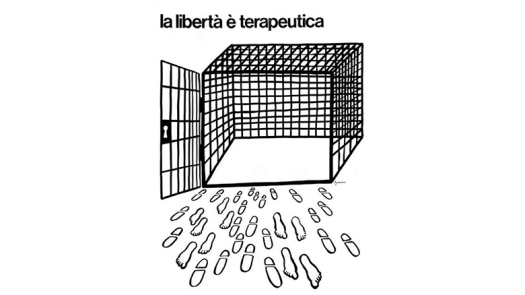


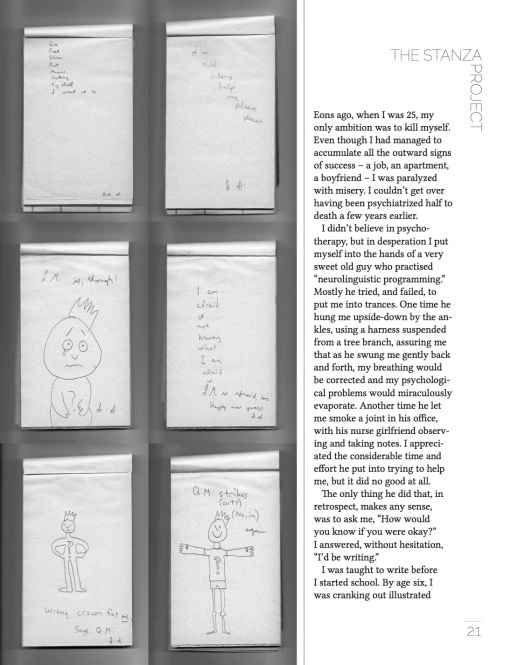



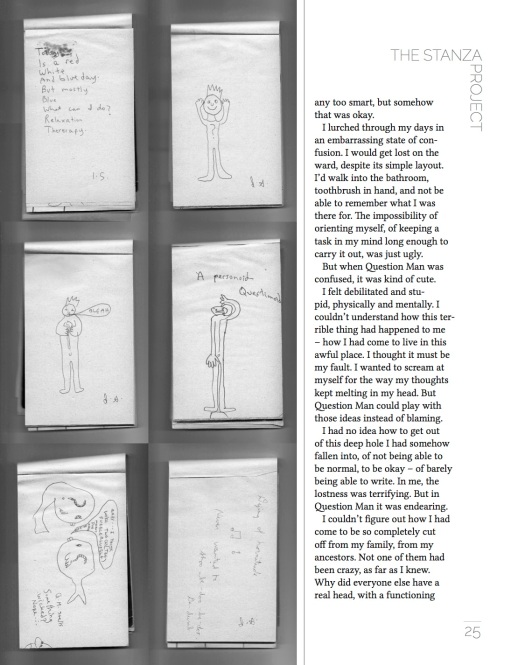
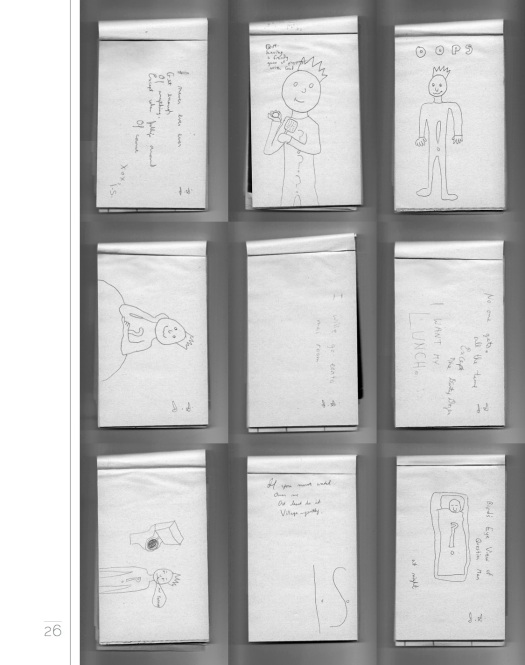
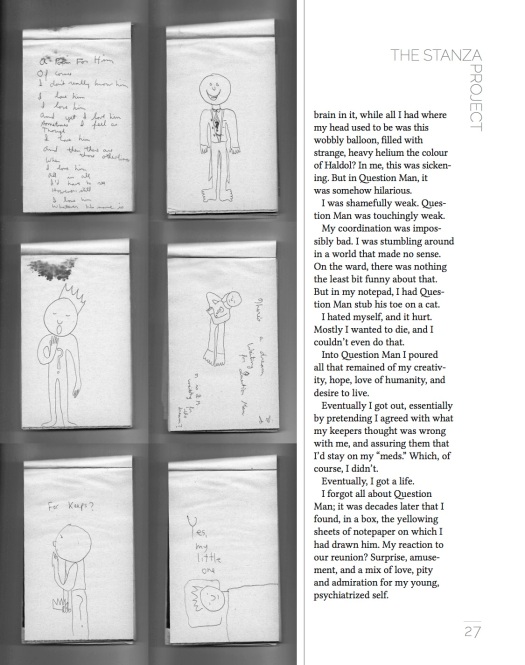
 These are understandably difficult issues. Historically, there has been a lot of difference of opinion and genuine debate. In 2006, the United Nations weighed in. They approved the Convention on the Rights of Persons with Disabilities (CRPD). The CRPD prohibits involuntary detention and forced interventions based on psychosocial disability. These are considered acts of discrimination that violate the right to equal protection under the law. Under the CRPD, people with psychosocial disabilities have the same rights to liberty, autonomy, dignity, informed consent, self-determination and security of the individual and property as everyone else.
These are understandably difficult issues. Historically, there has been a lot of difference of opinion and genuine debate. In 2006, the United Nations weighed in. They approved the Convention on the Rights of Persons with Disabilities (CRPD). The CRPD prohibits involuntary detention and forced interventions based on psychosocial disability. These are considered acts of discrimination that violate the right to equal protection under the law. Under the CRPD, people with psychosocial disabilities have the same rights to liberty, autonomy, dignity, informed consent, self-determination and security of the individual and property as everyone else.